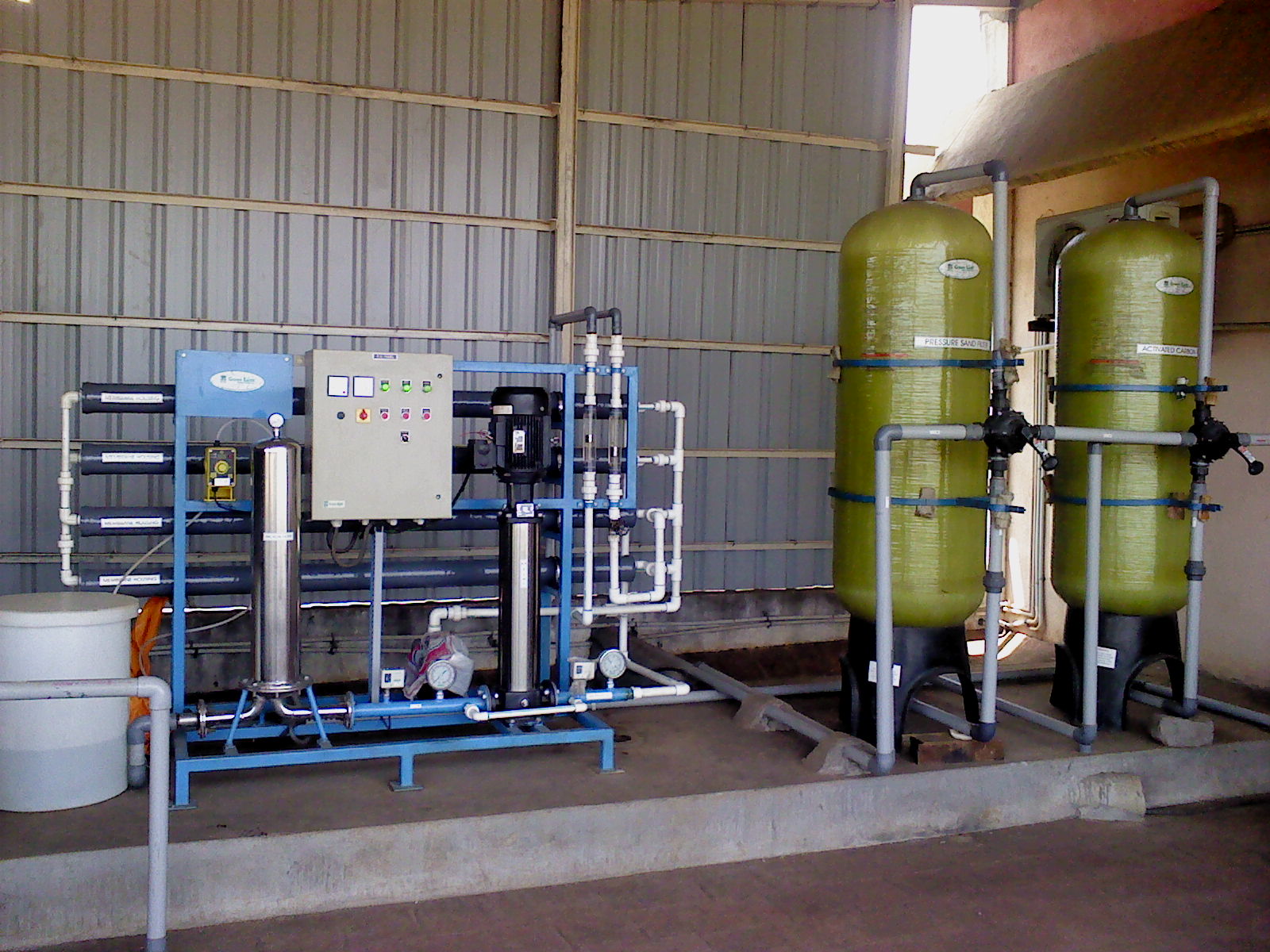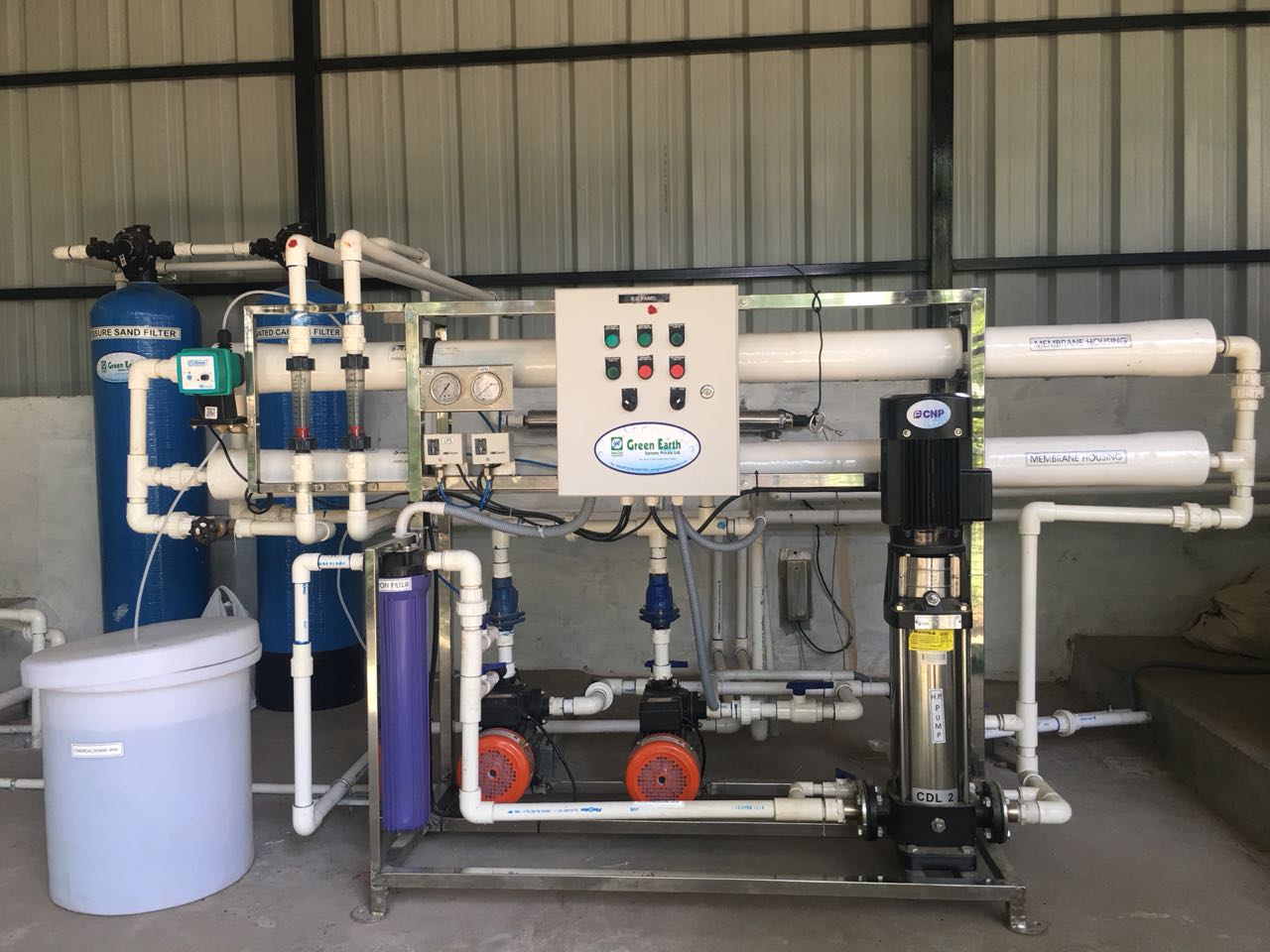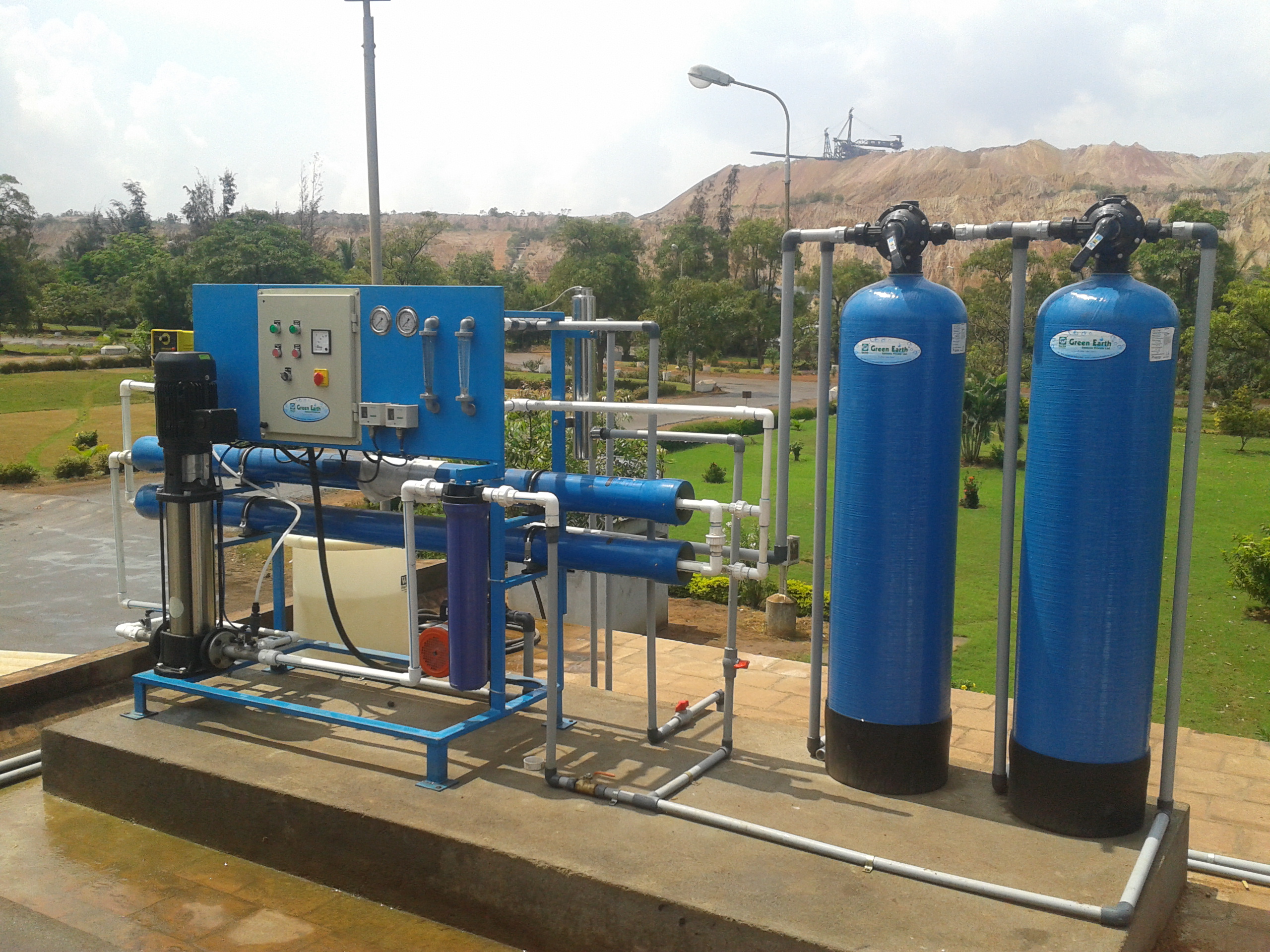REVERSE OSMOSIS PLANT PROCESS
– Water Purification at its Best
Reverse Osmosis Plant (RO) is the most efficient and effective method of water purification known to man so far. It removes impurities as small 0.0001 microns in size ( a human hair is 50 – 70 microns thick ) cleansing water of biological impurities, suspended particles, total dissolved solids (TDS), salts, fluorides metals and chemicals. Most non – RO Systems can filter particles only up to 5 – 10 microns in size, leaving behind almost all dissolved impurities (like bad tasting salts) and some fine physical impurities.
Reverse Osmosis (RO) is membrane separation process in which feed water flows along the membrane Surface under Pressure. Purified water permeates through the membrane and is collected, while the concentrated water, containing dissolved and undissolved impurities that do not flow through the membrane is discharged to the drain. System capacity depends on the water temperature, total dissolved solids (TDS) in the feed water, operating pressure and the overall recovery of the system. Our reverse osmosis desalination plants can handle the water purification duties for large volumes of water.
ADVANTAGES OF RO OVER CONVENTIONAL PROCESSES
Compared with other Conventional water treatment processes, Reverse Osmosis has proven to be the most efficient means for removing salts, chemical contaminants and heavy metals, such as lead, Arsenic from drinking water.
Today Reverse Osmosis Systems have proven to be the most economical and efficient means of improving the quality of water.
Stages of Purification:
- Pre – Filtration : Multi Grade Filter (MGF), Carbon Filter, Anthracite Filter, Iron Removal Filter etc., as per the requirement of the site.
- Ro Stream: High Pressure Pump, Micro Filtration, Chemical Dosing, Ro Membrane.
- Post – Filtration: Ozonators, UV Filtration



